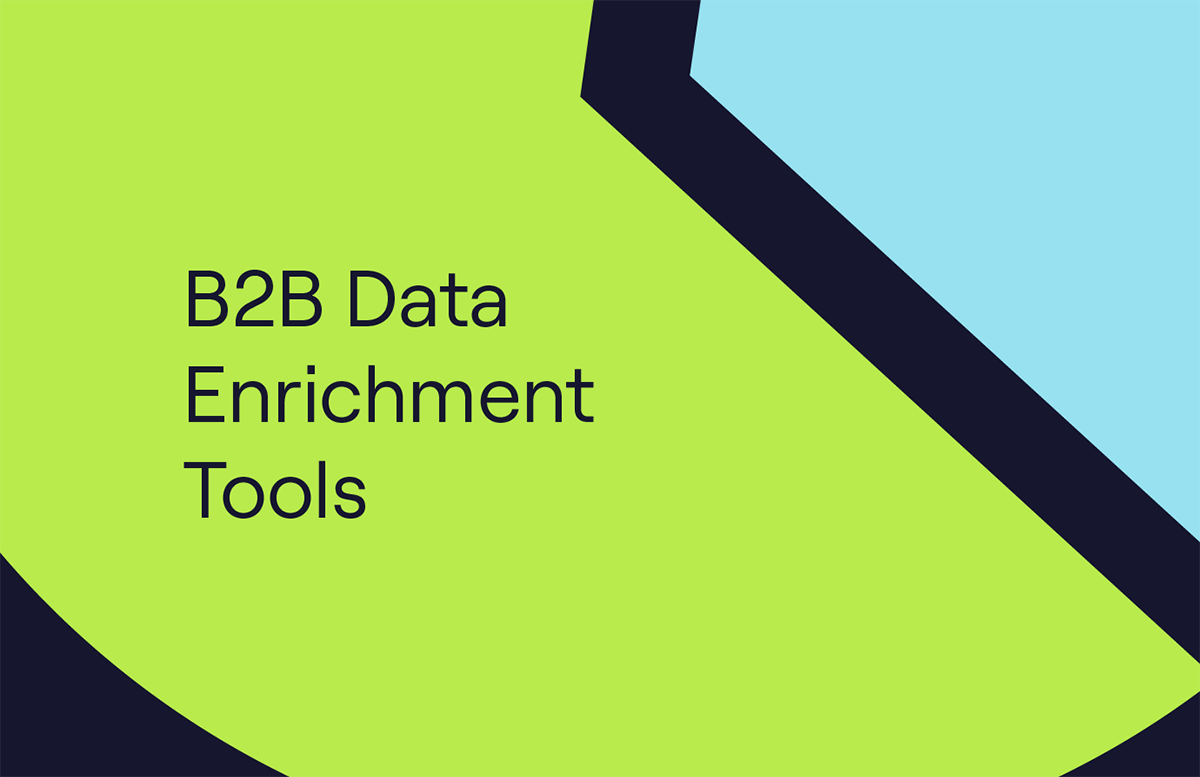Get a High-Quality Email Marketing Database (+ Tips)
Email marketing database resources:
Building a high-quality email marketing database should be your top priority if you want to run successful campaigns. After all, it’s crucial for ensuring your messages reach the right people at the right time.
In this article, we’ll explore what email database marketing is, why it matters, and how to build or enhance one that drives results.
What is an email marketing database?
An email marketing database, often called a mailing list, is a collection of email addresses and related lead information. It serves as a foundation for engaging prospects through promotional emails and maintaining audience interest with strategic digital marketing initiatives.
But it’s more than just a list of emails; a strong email database for marketing includes names, roles, industries, behaviours, engagement data, and more.
This rich data allows you to execute targeted, personalised email marketing campaigns that deliver results.
Understanding email lists vs email marketing databases
Let’s clear up a common confusion.
You’ve likely heard the terms “email list” and “email marketing database” used interchangeably. Although they go together like peanut butter and jelly, there are slight distinctions between them.
An email list is typically a simple compilation of email addresses, often unverified and static. It may lack segmentation, behavioural data, or even valid consent.
In contrast, an email marketing database is a dynamic, centralised system that integrates B2B data across platforms. It supports segmentation, enrichment, and compliance, enabling advanced targeting and automation.
Simply put, if you’re serious about results, you need a proper database rather than just a list.
Importance of database email marketing
To build and maintain an email marketing database, you’ll need software. It can be as simple as a spreadsheet or as sophisticated as a sales intelligence tool backed by AI technology, like Cognism.
A well-maintained email marketing campaign database can be a major competitive advantage. Here’s why:
- It significantly improves the efficiency of email campaign management.
- It enables businesses to understand and leverage subscriber buying behaviour.
- Personalised content results in higher engagement and conversion rates.
- It helps boost campaign performance, leading to a higher return on investment (ROI)
- It aligns with data regulations, like GDPR, to secure email addresses and service providers.
- Offers opportunities for optimisation.
You can easily segment your prospects into relevant groups with an email database. Moreover, segmented email marketing campaigns see a 760% increase in revenue compared to non-segmented campaigns.
By segmenting your email list, you can target prospects with communications that align with their interests, based on their past interactions with your brand or preferences.
The more you personalise your messaging, the better your sales and revenue will be.
So, a high-quality database is non-negotiable if you're investing in B2B digital marketing and database email marketing.
How to get a database for email marketing
When it comes to getting a database for email marketing, you have two options: buy one or build one.
One option may be better, depending on your goals and how you envision your long-term success.
Let’s look at the differences. 👇
1. Buy an email marketing database
Buying an email marketing database is the easiest way to get started. Swipe the corporate card, review your new email lists, and schedule your emails.
However, caution is advised. When you purchase email lists and databases from third-party vendors, you risk acquiring outdated information, such as invalid emails.
You might also encounter issues where prospects who have not opted in categorise your emails as unsolicited, lowering your sender reputation. Or they report you to the ICO, where you’ll be liable for a fine, depending on the privacy laws of your country.
Although this may seem like a shortcut, it’s not worth it.
Instead, invest in a reputable B2B data vendor who adheres to strict compliance guidelines (and isn’t afraid to tell you all about it!) Cognism is a fantastic option.
With compliance built in from the start, you’ll get high-quality, fresh data for Europe and the US for safe, legal and effective email marketing campaigns.
But don’t take our word for it. Here’s what Tharsus had to say:
“Our open rates used to be between 2-6%. Now they range from 40% to 60%. Working with a database that has a pool of verified emails makes my job as a marketer easier.”
2. Build your own database for email marketing
Building your own database for email marketing is a wise choice, even if it takes a bit more time.
Organically creating your lists and database ensures the prospects on your contact list want to hear from you. When they sign up for themselves, it’s a green light to send them updates and information about your brand, because they’ve explicitly requested it.
Here’s how to build an email database:
Collect emails
Create lead magnets, such as gated content, newsletters, landing pages, contests, webinars, or exclusive offers, to encourage prospects to sign up for your email list.
Use a simple form, like name, email address, title, and company, to help you organise your database. The easier you can make your form to navigate, the higher your chances of snagging a lead.
Integrate data
The best way to build your email marketing database? Pair your email list with analytical data.
Pull data from CRMs, web analytics, social media, and customer support platforms to centralise your insights. Integration ensures your marketing email database is comprehensive and up-to-date.
By doing this, you’ll better understand your audience, their behaviours, interests, and the types of content they would like to receive from you. Integration will also help ensure your email makreting database stays up to date.
Segment your audience
Segmenting your audience is a great way to ensure your messaging campaigns are effective and reach the intended inbox. It’s also a fantastic tactic for conversions.
Here are a few ways you can divide your B2B email lists:
- Demographics (job title, industry)
- Behaviour (past purchases, engagement)
- Funnel stage (lead, MQL, SQL)
Let’s say you create a campaign specifically for C-suite leaders. Sending that campaign to entry-level professionals likely won’t land as you’ve intended.
Segmentation helps you better reach your target audience, specifically the decision-makers and leaders on your list.
Enrich your CRM
As you collect and use marketing data, you’ll find that some contacts aren’t as fresh or accurate as they used to be. To keep your email marketing database from going stale, you’ll need to enrich it.
There are manual ways to do this, but it’s not worth the trouble. Instead, invest in a B2B email list provider that offers data enrichment as a feature. This way, you can schedule CRM enrichment to ensure your database is never outdated. Or you can enrich on demand. The choice is yours.
Cognism offers three types of enrichment. Check out how easy it is below. 👇
Examples of email marketing database software
We’ve covered how to create a database for email marketing. But you don’t have to build a database from scratch.
There are many email marketing database software solutions to choose from. These solutions make it easy to tap into your network and create meaningful B2B marketing campaigns.
Here are some of the top email marketing databases:
1. Cognism

Cognism provides the best email marketing database for B2B sales and marketing. Its compliance-first approach stands out, and the notified database ensures transparency and legality, making it the go-to source for EU and US campaigns.
Features include:
- Sales Companion for personalised access to in-depth account data to ensure fresh and fast outreach.
- Phone-verified cell phone numbers to help you connect with 87% of your list.
- Exclusive on-demand verified cell phone and email data set Diamond Data®.
- Unrestricted access to person and company-level data*.
- Instant and scheduled CRM enrichment and on-demand CSV enrichment.
- Intent data by Bombora.
- International coverage: EMEA, NAM, APAC.
- Easy platform setup.
- Integrations with CRMs and sales engagement tools.
- Focus on quality GDPR and CCPA-compliant data.
- Database checked and cleaned against global DNC lists.
- Find prospects using ChatGPT-style textual or voice prompts with Cognism AI Search.
- Fast and friendly support team.
*Subject to a generous fair usage policy.
2. Kaspr
/%5BPMM%201%5D%20-%20High%20quality%20data%20provider/European%20contact%20data%20map%201%20(EN).webp?width=824&height=549&name=European%20contact%20data%20map%201%20(EN).webp)
Kaspr is a lead generation tool that helps you find verified contact information, such as emails and phone numbers, for your target market.
It’s easy to build a list of verified business emails straight from LinkedIn and other high-quality sources.
Features include:
- Free version.
- Contact enrichment from a LinkedIn people search, group or event.
- Seamless experience across the Chrome Extension and web app.
- Integrations with HubSpot, Pipedrive, Lemlist, Salesforce, and more.
- Data is checked and verified against 150 sources.
- 120M+ European contacts.
- Data coverage spans the US, Europe and APAC.
- GPDR and CCPA aligned.
- Lead organisation using lists and notes.
- Team analytics.
- Request data with a waitlist.
3. LinkedIn Sales Nav
While not a traditional email marketing database software, LinkedIn Sales Nav is invaluable for identifying and engaging prospects. Combine it with Cognism or Kaspr to enrich data and export verified contact information.
Features include:
- Advanced lead search.
- InMail messaging.
- Real-time sales updates.
- Notes and tags synced with CRM.
Frequently Asked Questions
Q: Can I get a free email database for marketing?
A: You may find free email marketing database offers online, but beware of low-quality, outdated, or non-compliant data. For reliable results, always choose a trusted provider like Cognism.
👉 Learn if buying email lists is worth it?
Q: How to create a database for email marketing?
A: Start with opt-in lead capture forms, centralise the data in a CRM, use segmentation, and enrich it using tools like Cognism or Kaspr.
Q: What industries benefit from email database marketing?
A: All industries can benefit, from SaaS and finance to manufacturing and e-commerce. The key is using high-quality data and relevant segmentation.
The best email marketing database
Success in email database marketing hinges on quality, not quantity. Whether you’re executing personalised drip campaigns or scaling outbound outreach, a rich and reliable email marketing database will amplify your efforts.
And if you’re serious about compliant, conversion-ready data, there’s one clear choice:
Cognism!
When looking for the best email marketing database, here’s what sets Cognism apart:
- Accuracy: Cognism's verified business emails can help you connect 87% of your list.
- Compliance: Stay ahead of GDPR and CCPA regulations. Cognism’s notified database and DNC list cleaning capabilities ensure full legal coverage.
- EU & US reach: Whether targeting the US, UK, or an email marketing database in Europe, Cognism has you covered.
- Real-time updates: Data is refreshed continuously, avoiding bounce-backs and outdated information.
- Sales & marketing alignment: Powerful tools to drive pipeline with sales-validated data.
Ready to transform your email marketing strategy?
Choose Cognism — the leader in database email marketing. With extensive EU and US reach, world-class compliance, and industry-leading accuracy, Cognism delivers the results your business needs.
Start your journey with the best email marketing database today. Click to book a demo 👇


/csv%20enrichment/csv-enrichment-card.webp)
